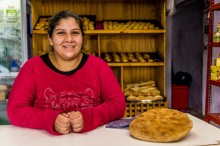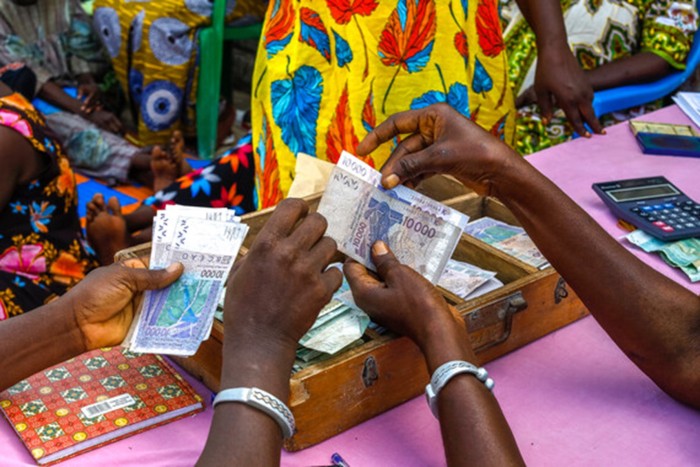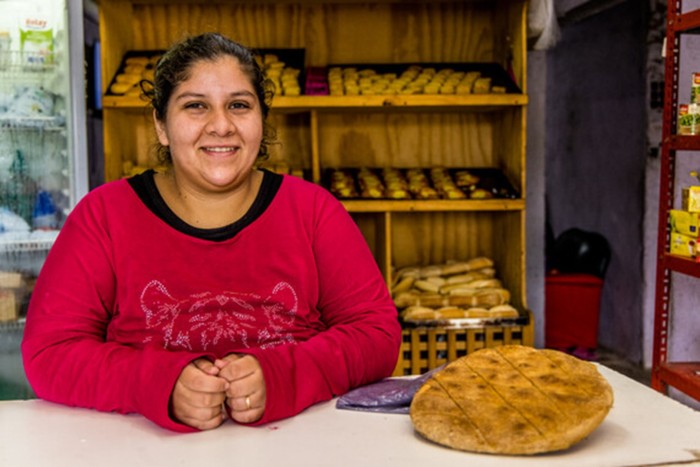Financial inclusion – what is a fair interest rate?
 17 August | 2023
17 August | 2023 When it comes to microlending to vulnerable communities, the question of interest rates often arises. Are the rates that borrowers pay to the lenders fair?
Oikocredit works with carefully chosen and responsible inclusive finance institutions in Asia, Africa and Latin America and the Caribbean. And offers loans at fair interest rates, in line with local market standards. In this interview, Dave Smit, Director of Impact Investments at Oikocredit International, provides answers to commonly raised concerns about the interest rates.
Oikocredit grants loans or equity participation to its partner companies. How many financial inclusion partners are you currently working with?
As of December 2022, we had 519 partners, of which 336 operate in the financial inclusion sector.
Oikocredit's partners offer a wide range of credit products, including loans for small and medium enterprises, housing loans, education loans, motorbike loans, and group loans...
Indeed, there is a diverse range of loan types. However, what is crucial is the purpose of the loan. Our partners’ loans must be used for a productive purpose. For example, a loan could be used to purchase a motorcycle for taxi services or transportation of goods. The loan could also be used for education, such as paying school fees for children. Group loans, where the responsibility for repayment is shared among group members, are also offered by many of our partners.

What is a microloan?
A microloan typically is provided to a micro entrepreneur, usually an individual person that requires funds for basic income generation. It could be as simple as purchasing fishing equipment. Microloans are typically unsecured, meaning there is no collateral or securities involved. The borrower, whether a woman or a man, invests in nets with the expectation of earning money from fish they catch. Micro loans are usually short-term, with quick cash flow, and are repaid within a relatively short period, typically just within a few months.
So, granting microloans is primarily about fostering a better future?
Yes, it is about creating a better future with the help of financing. In our focus countries, where there is typically no state social security system and borrowers have no other source of income, microloans play a crucial role.
Is that why the interest rates on microloans are typically higher compared to other types of loans?
Yes, that’s one factor. Microloans are considered to be high-risk loans. Additionally, there are high operating costs, and a portion of the interest rates is needed to cover them.
Why is that the case?
Finance companies providing these loans begin by offering financial education. Someone literally goes to the borrower’s house, even if it is in a remote location and explains: ‘Whatever loan you get, you need to repay it. You need to save and put aside a little bit of the money you have. Let’s look at the details of your situation’. Looking at the cash flow together takes time, but it is very important to protect borrowers from over-indebtedness.

Are there other factors influencing the interest rates?
Yes, loans in emerging and developing countries tend to be more expensive due to high inflation rates, which is part of the country risk. Inflation rates really affect interest rates a lot and are the starting point of the calculation of the interest rates.
Finally, there is a risk margin based on the sector in which the client operates and the product they sell. Whilst food is a necessity even during economic downturns, the agricultural sector typically has the highest risk margins – to cover for weather impacting crops, volatility of prices for farmers and other risks which are higher than in other sectors.
Which ’Oikocredit countries’ currently have the highest interest rates?
In the countries where we operate, inflation rates of 20% are not uncommon. Additionally, the partners require a margin, and we include a risk margin. An interest rate in local currency can easily reach 26%, which is considered a normal percentage in the market. Saving money at a bank account in these countries, often also gives a higher interest rate to compensate for the inflation effect.
How do low-income individuals manage to repay loans with higher interest rates?
It works out. A limited amount of finance can allow people to uplift their income generation capacity significantly. We observe that people’s incomes rise and prices adjust quickly. For example, if someone is a carpenter and inflation is 20%, the prices for their carpentry services and their income will also increase by 20% to cover for the rising expenses. I am just using these percentages as an example, clients can cover the costs because their incomes are also growing.

Where are the interest rates low currently?
Currently, there is a lot of uncertainty in the global markets, leading to private individuals, investors and banks being extra cautious in investing. The reduced availability of funding and smaller money supply negatively affect interest rates, even in Europe.
Due to the pandemic and the Ukraine war?
Yes, all this uncertainty has an impact on economies. Unfortunately, people in the global South are often the most affected by crises, be it related to climate change or economic uncertainty. I believe this is also a moment in time for Oikocredit to step up and play an important role in these countries, supporting and investing in low-income people to improve their livelihoods.
Thank you for providing these insights.
Archive > 2023 > August
- 24/08/2023 24/08/2023, 11:53 - Supporting Peruvian MSEs through digital lending
- 24/08/2023 24/08/2023, 11:45 - Peruvian Fintech Prestamype closes a US$5 million Pre-Series A equity round led by impact funds ALIVE Ventures and Oikocredit
- 23/08/2023 23/08/2023, 14:04 - Q2 2023 quarterly report: Results holding up in a challenging context
- 17/08/2023 17/08/2023, 11:18 - Financial inclusion – what is a fair interest rate?
- 01/08/2023 01/08/2023, 13:16 - Oikocredit, IDB Invest and Cooperativa Jardín Azuayo announce groundbreaking diversity and inclusion social bond
- 01/08/2023 01/08/2023, 12:51 - Oikocredit, IDB Invest and Cooperativa Jardín Azuayo announce groundbreaking diversity and inclusion social bond

